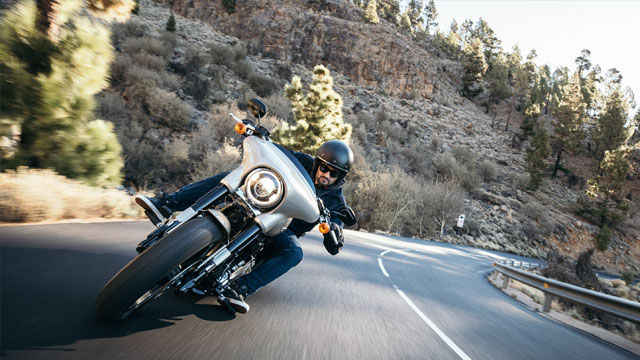Quirks And Perks
Every car has its personality, and the Prius is no exception. It’s a blend of smart engineering and head-scratching design choices that leave drivers swapping stories. One trip might have you impressed by its thoughtful features, the next muttering under your breath. That’s the thing about this hybrid—it’s equal parts infuriating and impressive. Let’s take a closer look at both sides.
 Kārlis Dambrāns from Latvia on Wikimedia
Kārlis Dambrāns from Latvia on Wikimedia
1. Slow Acceleration
You're merging onto a busy highway, foot pressed firmly on the accelerator, yet your car responds like it's taking a leisurely Sunday stroll. This frustrating reality stems from multiple culprits working against you. Hybrid battery degradation over time significantly reduces available power.
2. Cramped Rear Seats
The narrow cabin design prioritizes aerodynamics over human comfort, leaving full-grown adults feeling like sardines. Many resourceful owners have discovered aftermarket seat cushions as their salvation. However, later-generation models did attempt improvements through adjusted seat angles and better upholstery materials.
3. High Road Noise
Highway cruising becomes an unexpectedly noisy affair in a Prius, where aerodynamic layout choices ironically build their own acoustic problems. The combination of tire noise and wind resistance generates a constant hum. Sound insulation proves less effective than in premium alternatives.
4. Fragile Windshield
Class action lawsuits tell the story better than any owner's manual. This ride’s windshields crack with alarming frequency during completely normal driving conditions. This isn't just bad luck or isolated incidents—it's a pattern severe enough to generate legal action against Toyota.
5. Weak Water Pump
Premature water pump failures in older models develop overheating risks that can cause catastrophic engine damage. This failure triggers the P261B diagnostic trouble code and may show hybrid system warnings. Repair involves replacing either the whole pump or just the impeller/rotor assembly.
 Ryan Finnie from Reno, NV, USA on Wikimedia
Ryan Finnie from Reno, NV, USA on Wikimedia
6. Stiff Ride Quality
When road irregularities are transmitted straight into your spine by the automobile’s fuel-economy-focused suspension setting, every pothole turns into a personal attack. This harshness is exacerbated by low rolling resistance tires, making the experience noticeably more startling than that of traditional cars.
 Ryan Finnie from Reno, NV, USA on Wikimedia
Ryan Finnie from Reno, NV, USA on Wikimedia
7. Headlight Malfunctions
Sudden headlight shutoffs during night driving result in genuine safety hazards that no eco-conscious driver should have to endure. Electrical problems and degrading bulb connectors cause these dangerous malfunctions, while flickering lights announce impending failures that leave everyone scrambling for solutions.
8. Dashboard Display Failures
Expensive replacement costs await as the multi-function dashboard display becomes unresponsive or fails. This leaves drivers without important vehicle information during critical moments. Software glitches in previous models also create maddening situations where speedometers and hybrid system monitors simply disappear.
9. Air Dam Scraping
The air dam on a Toyota Prius is a low front bumper extension made to improve airflow and aerodynamic efficiency, especially for cooling the radiator. However, one common issue with the Prius air dam is its vulnerability to scraping due to its low clearance.
10. Hybrid Battery Deterioration
Time becomes your enemy the moment the hybrid battery loses capacity, reducing electric-only range and overall vehicle efficiency. Replacement or reconditioning costs can exceed $2,000, turning what seemed like long-term savings into a substantial unexpected expense. Some folks use aftermarket reconditioning kits.
The annoyances aside, here’s why people stick with the car.
1. Advanced Safety Features
Toyota Safety Sense 3.0 delivers comprehensive protection through Pre-Collision System with Pedestrian Detection, Lane Departure Alert with Steering Assist, and Full-Speed Dynamic Radar Cruise Control as standard equipment. The integration of Laser Screw Welding and high-strength steel also improves collision safety performance.
 Tesla is for WEENIES! //2026 Toyota Prius XLE AWD// by Ben Hardy
Tesla is for WEENIES! //2026 Toyota Prius XLE AWD// by Ben Hardy
2. Eco-Friendly/Reduced Emissions
EPA estimates often exceed 50 MPG, meaning dramatically less fuel is burned and fewer greenhouse gas emissions compared to older gasoline vehicles that gulp gas at half the efficiency. The Prius pioneered nickel-metal hydride and lithium-ion battery technology, improving energy efficiency.
 Tesla is for WEENIES! //2026 Toyota Prius XLE AWD// by Ben Hardy
Tesla is for WEENIES! //2026 Toyota Prius XLE AWD// by Ben Hardy
3. Regenerative Braking Technology
Kinetic energy capture during deceleration gets converted into electrical energy that recharges the hybrid battery. This extends brake life while improving overall fuel economy with the aid of reduced reliance on traditional friction brakes. The latest models possess better active hydraulic boosters.
4. Reliable Build
Owners routinely report exceeding 200,000 miles with minimal major repairs when following proper maintenance schedules. This established the Prius as a long-term investment rather than a disposable appliance. The beast consistently scores high in reliability rankings and owner satisfaction surveys.
 Tesla is for WEENIES! //2026 Toyota Prius XLE AWD// by Ben Hardy
Tesla is for WEENIES! //2026 Toyota Prius XLE AWD// by Ben Hardy
5. Improved Performance
As per sources, the latest Prius generation delivers 194–196 horsepower compared to the previous model's mere 121 horsepower. All-wheel-drive versions bump output to 196 horsepower, giving the Prius enough power to “get out of its own way, and even have a little fun”.
6. Affordable Maintenance And Repairs
Toyota's widespread dealer network delivers readily available, reasonably priced parts and service specifically designed for hybrid vehicles. This makes maintenance convenient and cost-effective nationwide. Original brake pads last significantly longer due to regenerative braking assistance, and fewer oil changes are needed.
 Photo By: Kaboompics.com on Pexels
Photo By: Kaboompics.com on Pexels
7. Versatile Hatchback Design
The hatchback configuration allows easy loading of bulky items. At the same time, it gives more cargo space than many compact sedans. Roof rack options and hitch-mounted carriers enable even greater cargo flexibility for bikes, luggage, or outdoor gear.
 Toyota Prius 2023 - PRACTICALITY & trunk review (QUALITY check) by CARiNIK
Toyota Prius 2023 - PRACTICALITY & trunk review (QUALITY check) by CARiNIK
8. Electric-Only Driving Capability
Low-speed operation up to 25mph for approximately one mile allows emission-free driving in neighborhoods and parking areas, providing quiet, clean transportation for short distances that comprise much of urban driving. Stop-and-go traffic becomes an opportunity to operate without burning gasoline.
 Tesla is for WEENIES! //2026 Toyota Prius XLE AWD// by Ben Hardy
Tesla is for WEENIES! //2026 Toyota Prius XLE AWD// by Ben Hardy
9. Advanced Electronic AWD System
The Prius AWD system shares more similarities with supercars like the Acura NSX or Ferrari SF90, using an independent electric motor to power the rear wheels instead of mechanical driveshafts and differentials. This e-AWD system automatically activates when extra traction is needed.
 Tesla is for WEENIES! //2026 Toyota Prius XLE AWD// by Ben Hardy
Tesla is for WEENIES! //2026 Toyota Prius XLE AWD// by Ben Hardy
10. Strong Resale Value
Ongoing demand for fuel-efficient vehicles maintains the value of this car. Also, the reputation for reliability creates buyer confidence in the used car market. The Toyota brand's hybrid leadership and strong market presence support high trade-in and resale prices that protect owners' investments.


















